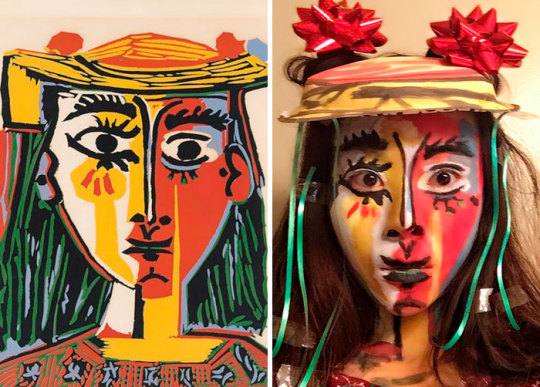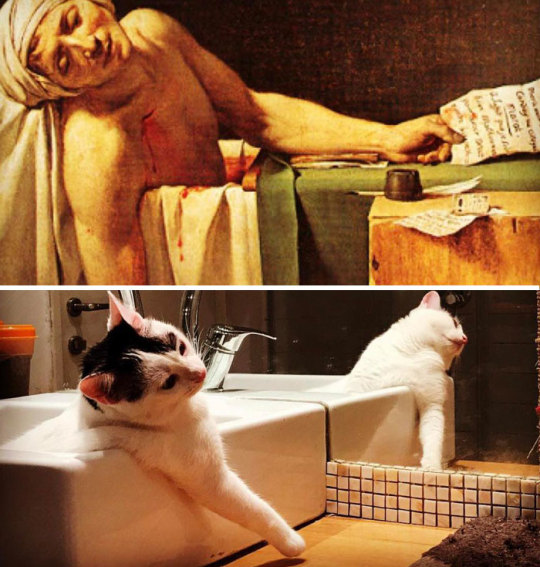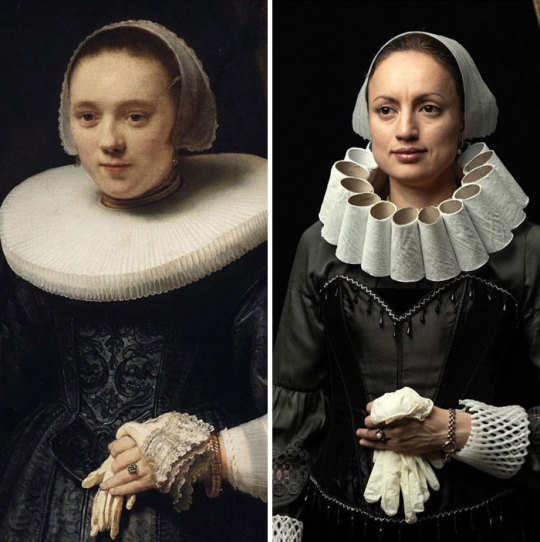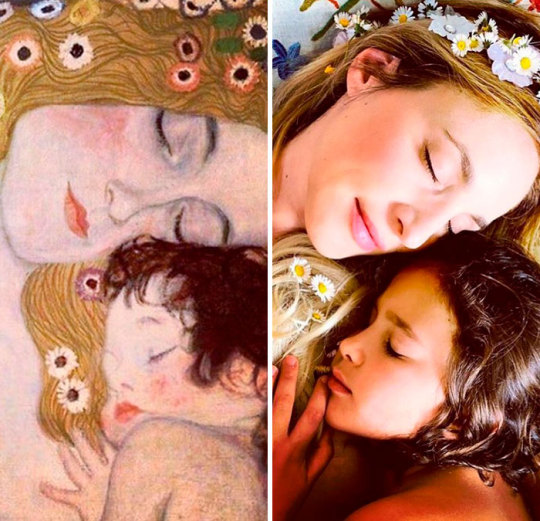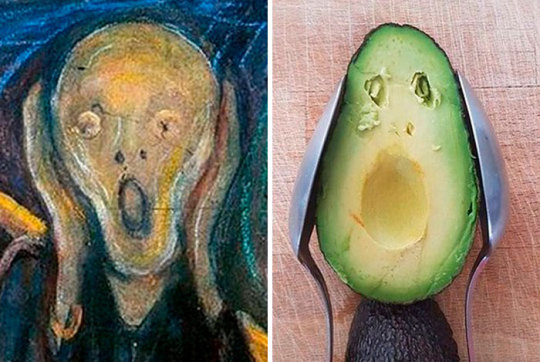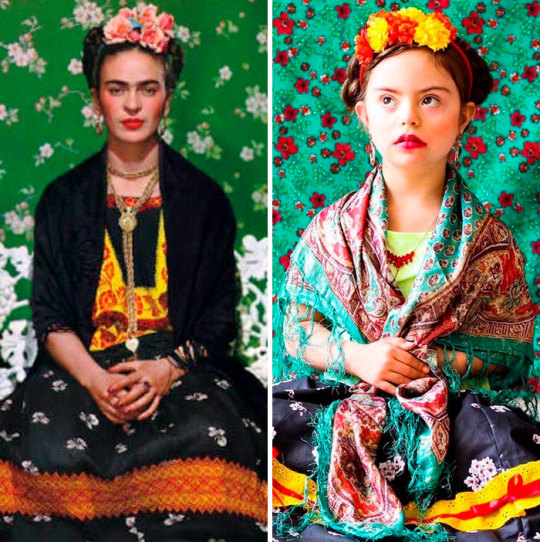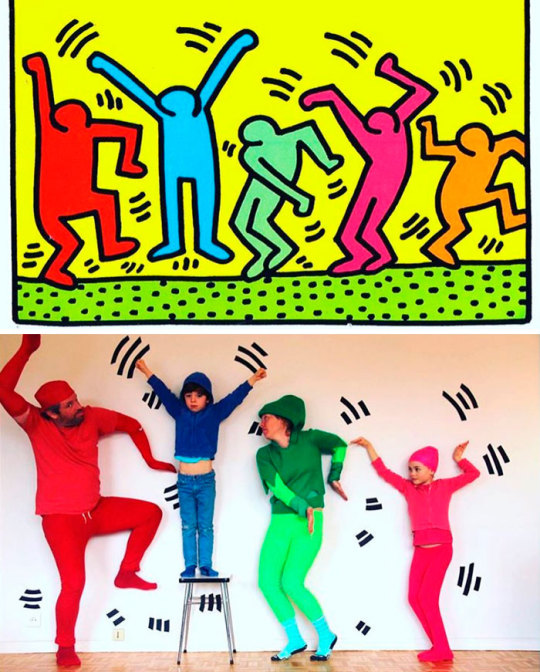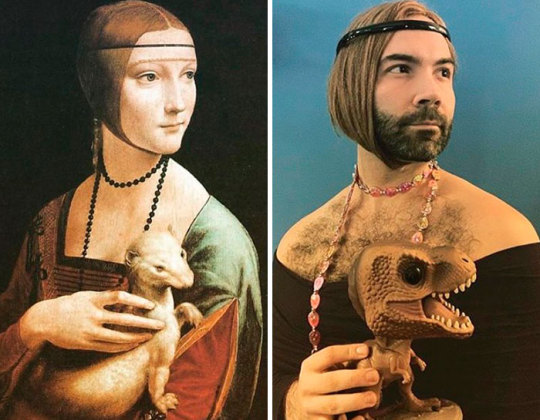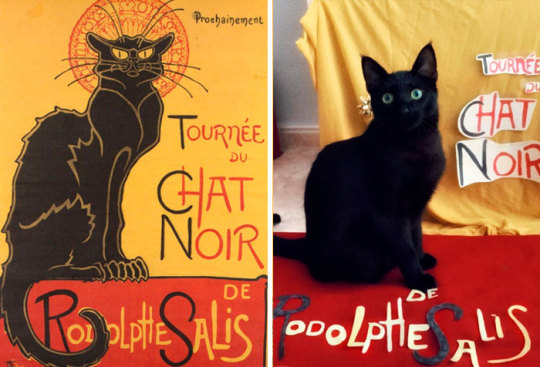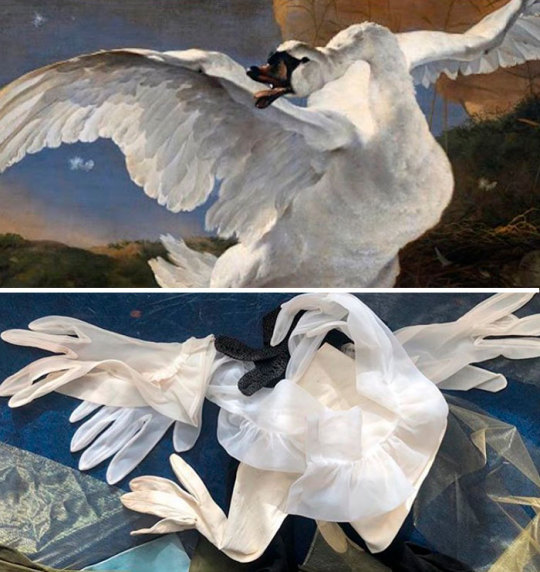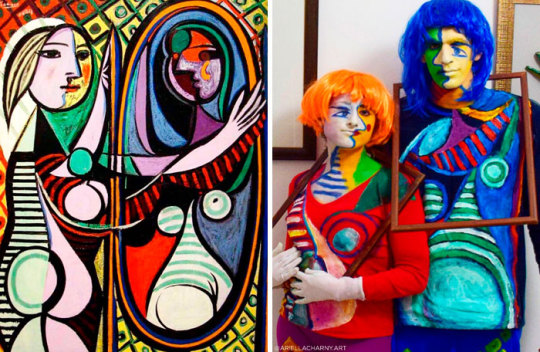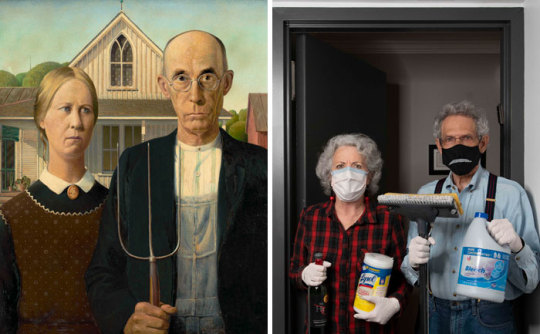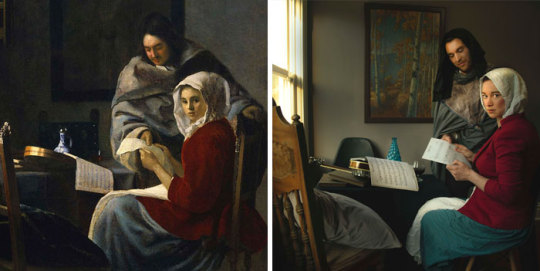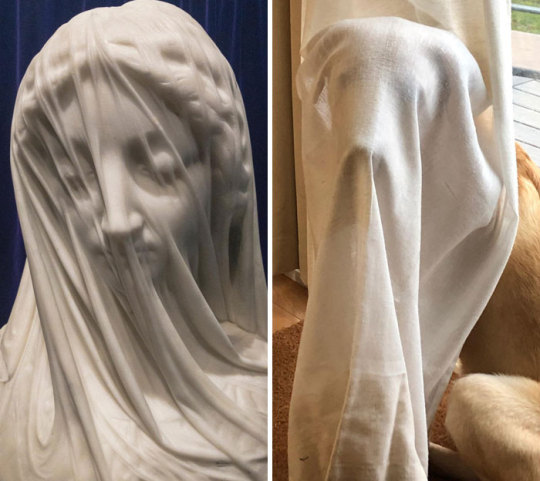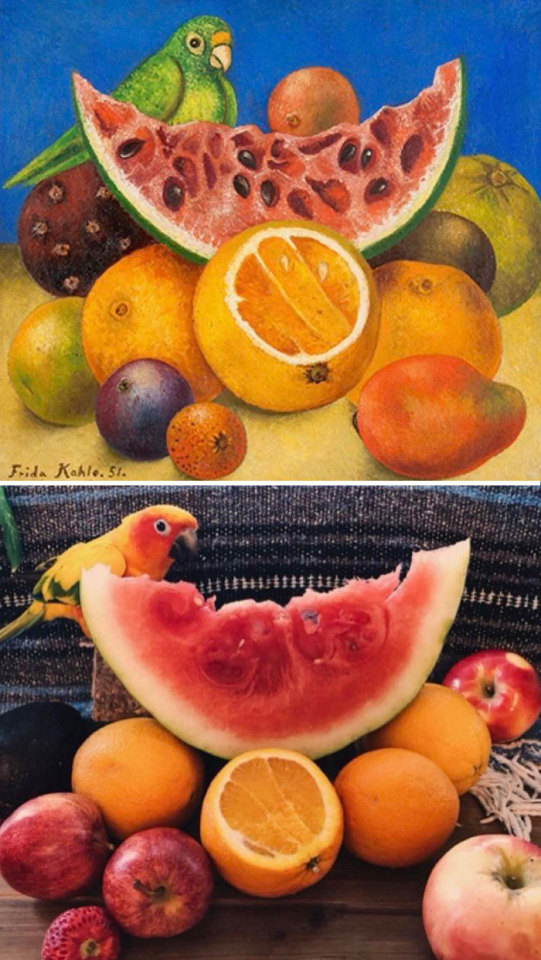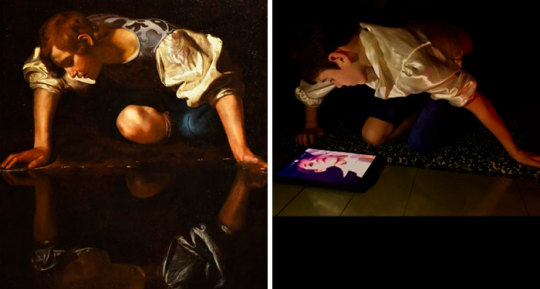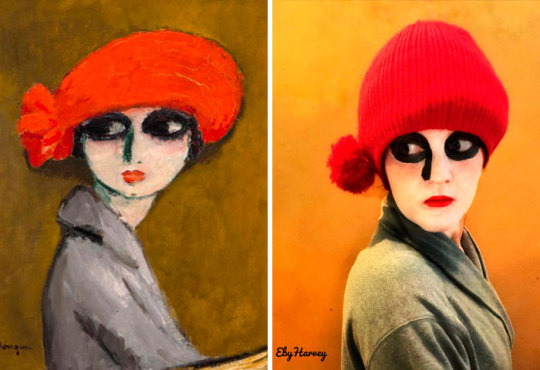Don't wanna be here? Send us removal request.
Text

Pro Hero Bakugou Katsuki x Wife Fem!Reader Headcanons.
Tags: Established relationship, both are pro hero's, fluff, dash of angst, NSFW later on, Swearing, Praise, M!masturbation, F!masturbation, Cockwarming, Spanking, Mask Kink, Oral (F and M receiving and giving)
SFW:
- Katsuki would be the best and most loyal husband ever fr, any attention he gets from other women or fangirls he immediately shuts down with a simple "fuck off I'm married".
- He definitely cooks for you even though you are capable enough in the kitchen it's always "not as good as my cooking"
- He would keep any pictures of you from magazine or advert shoots in his office because "you look hot babe"
- Katsuki would spoil you with extravagant holidays, gifts, jewellery, clothes etc (even though you can pay for yourself) and he would definitely secretly enjoy taking you shopping and picking out items for you.
- You guys never left the honeymoon phase really, things definitely slowed down after a couple of years due to work but the passion is still there and you both can't keep yours hands to yourselves.
- You both support each other after a failed or particularly devastating mission by cuddling and crying into each other.
- Both your lockscreens are pictures of each other taken during one of your exotic holidays.
- Katsuki and you hates it when the press pry to much into your personal lives with awkward or down right insulting questions.
- You collaborate with Katsuki a lot during sponsorships as either of you don't want to be paired with any other Pro Hero or influencer
- Katsuki VERY occasionally does instagram lives (due to pressure from his team) whenever you come across it you read out any disrespectful comments and completely destroy them with insults.
- The Bakusquad tease you guys at lot in being complete simps for each other.
- Expect a lot of random hugs and kisses from behind you from Katsuki, he loves how he feels as if he is protecting you and how soft you feel in his arms.
- If Katsuki or you are late back from patrol, the other one would stay up late waiting...which means on more than one occasion one of you have come home to the other sleeping on the sofa.
- Katsuki MELTS whenever you laugh at one of his jokes, he feels like a awkward love struck middle school kid inside.
- You both flip of paparazzi together, almost every shot has you guys giving the annoying fucks the finger.
- If anyone flirts with you, Katsuki WILL try and fight them.
- He once came home to find you trying on his hero costume and he got completely flustered at the sight.
- He often has panic attacks about losing you and it often keeps him awake, shaking non stop.
- You often feel like you aren't good enough for him and you have cried to him about "finding someone in your league" and "you deserve a supermodel for a wife instead of me"
NSFW:
- Katsuki often wears his hero mask when fucking you in missionary because he know you go crazy for it.
- He LOVES eating you out and always gets hard while doing it.
- He also loves it when you give him blowjobs and seeing your eyeliner run down your cheeks as you choke on his dick, how he prefers giving than receiving.
- Quickies in His office 100%
- Katsuki loves it when you are on top of him, riding him relentlessly..watching you go up and down on him.
- He enjoys lightly spanking you whenever you bend over and seeing your ass giggle.
- You love it when he grinds against you and get each other off while still clothed and seeing the damp patch on his sweats driving him insane with lust.
- Katsuki likes it when you cockwarm him at work while he is doing paperwork in his office, only to bounce you up and down after a while so you feel good too.
- YALL PRAISE EACHOTHER SO MUCH. he doesn't like degrading you at all because he thinks of you to be above "all the extras"
-Lowkey likes it when you call him a good boy.
- You both have had your fair share of steamy moments in your bathtub.
- He has a tounge peircing ;)
- He won't actually go inside of you until you've came once.
- When you argue it often leads to a make up hatefuck.
- He loves it when you take your time to kiss all over his body, especially his neck, nipples and scars while saying how great and handsome he is.
"He will leave hickeys in somewhat obvious places to remind the rest of the world that he is loyal to only you.
- Loves the feeling of your Thighs pressing against his head.
- KING of after care and foreplay.
- secretly likes it when you tease him with his Hero name Dynamight during sex.
440 notes
·
View notes
Photo






V vs V aka Vanitas vs Ventus another RaS short comic. Those two should just learn how to share
NEW - ZIP file
http://www.mediafire.com/?j2hldsp66oxash6
913 notes
·
View notes
Photo


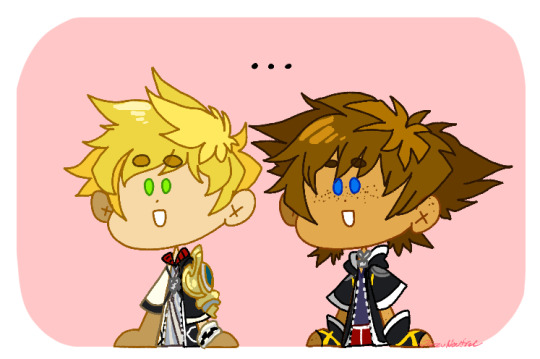





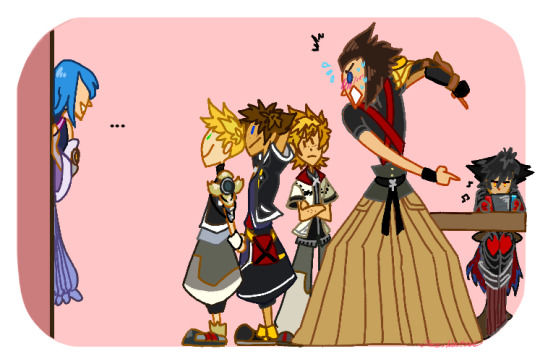
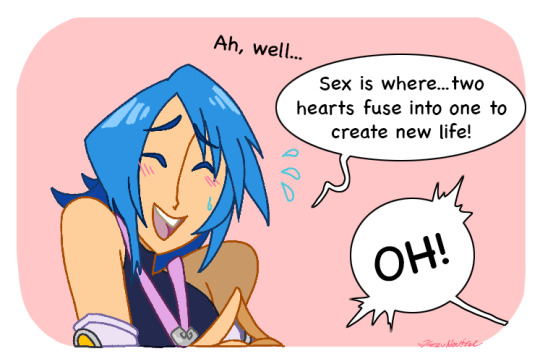






Where do Babies Come From?
Kingdom Hearts is full of idiots and I want it kept that way
7K notes
·
View notes
Photo
















Where do Babies Come From?
Kingdom Hearts is full of idiots and I want it kept that way
7K notes
·
View notes
Text
Lumine & the World, part 3 | Government & Laws

…in which I talk about the origins of Lumine’s government: the founding of its leaders, royal councils, & the process of introducing laws. Thanks to @longshirt-problems for the suggestion! (Not my gif.)
Every week, I dig deeper into the finer details of the Writer trilogy. Keep an eye on my #lumine and the world tag for more - and as always, just ask if you would like to join the taglist(s)!
✒ ABOUT THE BOOKS | Parts [1] [2]
Let’s start off with a bit of history, shall we?
I. Early Government
When “Lumine” was founded, after society developed & civilized, this island in the middle of the Ever Sea had four regions: The Fair Forests, the Crystal Mountains, The Far Hills, and Nox (so-named because its deciduous landscape made seasons easy to track.)
People in certain regions chose to settle there based on resources, which meant a lot, given that humans are creative & want to do different things. In time, each quadrant developed its own distinct lifestyle as those in the Fair Forests monopolized the lumber trade; Mountaineers became miners & smiths; and Farthings became farmers & fishermen; and Noxians did a bit of everything (they reached a pseudo-industrialized state rather quickly.)
For the most part, at first, the regions lived isolated from one another - which worked because Lumine’s magic made the earth so fertile that it was easy to grow food/raise livestock no matter where you lived. As the need for trade arose, however, people wanting better materials & goods, these cultures began to blend. This, as you can imagine, gave rise to conflict.
(Much) more below the cut - DISCLAIMER: LONG POST!
✒ WRITER TRILOGY TAGLIST:
@longshirt-problems, @shattered-starrs, @anomaly00
✒ WORLDBUILDING TAGLIST:
@longshirt-problems, @shattered-starrs, @rhikasa, @anomaly00
…also tagging @inky-duchess, because I feel like you’d have some informative advice if any info (keeping in mind that this country is messed up) is wrong!
Keep reading
38 notes
·
View notes
Text
Fantasy Guide to Architecture
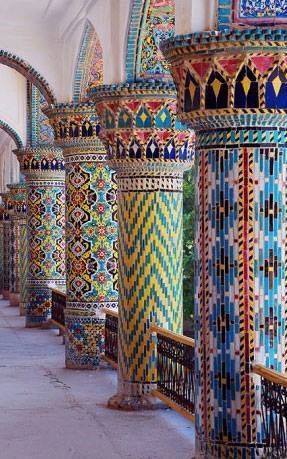


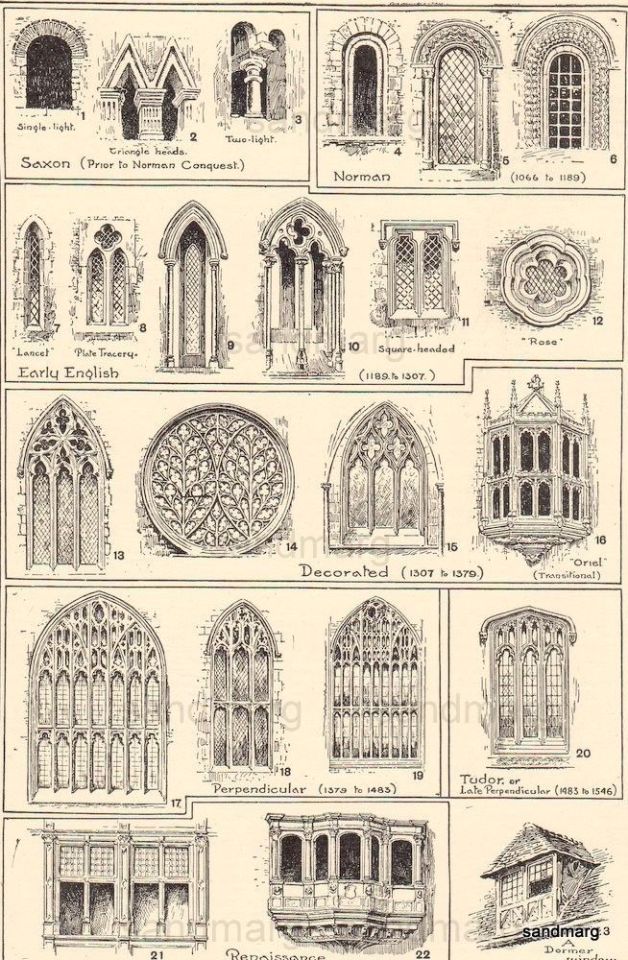


This post has been waiting on the back burner for weeks and during this time of quarantine, I have decided to tackle it. This is probably the longest post I have ever done. I is very tired and hope that I have covered everything from Ancient times to the 19th Century, that will help you guys with your worldbuilding.
Materials
What you build with can be determined by the project you intend, the terrain you build on and the availability of the material. It is one characteristic that we writers can take some some liberties with.
Granite: Granite is an stone formed of Igneous activity near a fissure of the earth or a volcano. Granites come in a wide range of colour, most commonly white, pink, or grey depending on the minerals present. Granite is hard and a durable material to build with. It can be built with without being smoothed but it looks bitchin' and shiny all polished up.
Marble: Probably everyone's go to materials for building grand palaces and temples. Marble is formed when great pressure is placed on limestone. Marble can be easily damaged over time by rain as the calcium in the rock dissolves with the chemicals found in rain. Marble comes in blue, white, green, black, white, red, gray and yellow. Marble is an expensive material to build with, highly sought after for the most important buildings. Marble is easy to carve and shape and polishes to a high gleam. Marble is found at converging plate boundaries.
Obsidian: Obsidian is probably one of the most popular stones mentioned in fantasy works. Obsidian is an igneous rock formed of lava cooling quickly on the earth's surfaces. Obsidian is a very brittle and shiny stone, easy to polish but not quite a good building material but a decorative one.
Limestone: Limestone is made of fragments of marine fossils. Limestone is one of the oldest building materials. Limestone is an easy material to shape but it is easily eroded by rain which leads most limestone monuments looking weathered.
Concrete: Concrete has been around since the Romans. Concrete is formed when aggregate (crushed limstone, gravel or granite mixed with fine dust and sand) is mixed with water. Concrete can be poured into the desired shape making it a cheap and easy building material.
Brick: Brick was one of history's most expensive materials because they took so long to make. Bricks were formed of clay, soil, sand, and lime or concrete and joined together with mortar. The facade of Hampton Court Palace is all of red brick, a statement of wealth in the times.
Glass: Glass is formed of sand heated until it hardens. Glass is an expensive material and for many years, glass could not be found in most buildings as having glass made was very expensive.
Plaster: Plaster is made from gypsum and lime mixed with water. It was used for decoration purposes and to seal walls. A little known fact, children. Castle walls were likely painted with plaster or white render on the interior.
Wattle and Daub: Wattle and daub is a building material formed of woven sticks cemented with a mixture of mud, one of the most common and popular materials throughout time.
Building terms
Arcade: An arcade is a row of arches, supported by columns.
Arch: An arch is a curved feature built to support weight often used for a window or doorway.
Mosaic: Mosaics are a design element that involves using pieces of coloured glass and fitted them together upon the floor or wall to form images.
Frescos: A design element of painting images upon wet plaster.
Buttress: A structure built to reinforce and support a wall.
Column: A column is a pillar of stone or wood built to support a ceiling. We will see more of columns later on.
Eave: Eaves are the edges of overhanging roofs built to allow eater to run off.
Vaulted Ceiling: The vaulted ceilings is a self-supporting arched ceiling, than spans over a chamber or a corridor.
Colonnade: A colonnade is a row of columns joined the entablature.
Entablature: a succession of bands laying atop the tops of columns.
Bay Window: The Bay Window is a window projecting outward from a building.
Courtyard/ Atrium/ Court: The courtyard is an open area surrounded by buildings on all sides
Dome: The dome resembles a hollow half of a sphere set atop walls as a ceiling.
Façade: the exterior side of a building
Gable: The gable is a triangular part of a roof when two intersecting roof slabs meet in the middle.
Hyphen: The hyphen is a smaller building connecting between two larger structures.
Now, let's look at some historical building styles and their characteristics of each Architectural movement.
Classical Style
The classical style of Architecture cannot be grouped into just one period. We have five: Doric (Greek), Ionic (Greek), Corinthian (Greek), Tuscan (Roman) and Composite (Mixed).
Doric: Doric is the oldest of the orders and some argue it is the simplest. The columns of this style are set close together, without bases and carved with concave curves called flutes. The capitals (the top of the column) are plain often built with a curve at the base called an echinus and are topped by a square at the apex called an abacus. The entablature is marked by frieze of vertical channels/triglyphs. In between the channels would be detail of carved marble. The Parthenon in Athens is your best example of Doric architecture.
Ionic: The Ionic style was used for smaller buildings and the interiors. The columns had twin volutes, scroll-like designs on its capital. Between these scrolls, there was a carved curve known as an egg and in this style the entablature is much narrower and the frieze is thick with carvings. The example of Ionic Architecture is the Temple to Athena Nike at the Athens Acropolis.
Corinthian: The Corinthian style has some similarities with the Ionic order, the bases, entablature and columns almost the same but the capital is more ornate its base, column, and entablature, but its capital is far more ornate, commonly carved with depictions of acanthus leaves. The style was more slender than the others on this list, used less for bearing weight but more for decoration. Corinthian style can be found along the top levels of the Colosseum in Rome.
Tuscan: The Tuscan order shares much with the Doric order, but the columns are un-fluted and smooth. The entablature is far simpler, formed without triglyphs or guttae. The columns are capped with round capitals.
Composite: This style is mixed. It features the volutes of the Ionic order and the capitals of the Corinthian order. The volutes are larger in these columns and often more ornate. The column's capital is rather plain. for the capital, with no consistent differences to that above or below the capital.
Islamic Architecture
Islamic architecture is the blanket term for the architectural styles of the buildings most associated with the eponymous faith. The style covers early Islamic times to the present day. Islamic Architecture has some influences from Mesopotamian, Roman, Byzantine, China and the Mongols.
Paradise garden: As gardens are an important symbol in Islam, they are very popular in most Islamic-style buildings. The paradise gardens are commonly symmetrical and often enclosed within walls. The most common style of garden is split into four rectangular with a pond or water feature at the very heart. Paradise gardens commonly have canals, fountains, ponds, pools and fruit trees as the presence of water and scent is essential to a paradise garden.
Sehan: The Sehan is a traditional courtyard. When built at a residence or any place not considered to be a religious site, the sehan is a private courtyard. The sehan will be full of flowering plants, water features snd likely surrounded by walls. The space offers shade, water and protection from summer heat. It was also an area where women might cast off their hijabs as the sehan was considered a private area and the hijab was not required. A sehan is also the term for a courtyard of a mosque. These courtyards would be surrounded by buildings on all sides, yet have no ceiling, leaving it open to the air. Sehans will feature a cleansing pool at the centre, set under a howz, a pavilion to protect the water. The courtyard is used for rituals but also a place of rest and gathering.
Hypostyle Hall: The Hypostyle is a hall, open to the sky and supported by columns leading to a reception hall off the main hall to the right.
Muqarnas : Muqarnas is a type of ornamentation within a dome or a half domed, sometimes called a "honeycomb", or "stalactite" vaulted ceiling. This would be cast from stone, wood, brick or stucco, used to ornament the inside of a dome or cupola. Muqarnas are used to create transitions between spaces, offering a buffer between the spaces.
African Architecture
African Architecture is a very mixed bag and more structurally different and impressive than Hollywood would have you believe. Far beyond the common depictions of primitive buildings, the African nations were among the giants of their time in architecture, no style quite the same as the last but just as breathtaking.
Somali architecture: The Somali were probably had one of Africa's most diverse and impressive architectural styles. Somali Architecture relies heavy on masonry, carving stone to shape the numerous forts, temples, mosques, royal residences, aqueducts and towers. Islamic architecture was the main inspiration for some of the details of the buildings. The Somali used sun-dried bricks, limestone and many other materials to form their impressive buildings, for example the burial monuments called taalo
Ashanti Architecture: The Ashanti style can be found in present day Ghana. The style incorporates walls of plaster formed of mud and designed with bright paint and buildings with a courtyard at the heart, not unlike another examples on this post. The Ashanti also formed their buildings of the favourite method of wattle and daub.
Afrikaner Architecture: This is probably one of the oddest architectural styles to see. Inspired by Dutch settlers (squatters), the buildings of the colony (planters/squatters) of South Africa took on a distinctive Dutch look but with an Afrikaner twist to it making it seem both familiar and strange at the same time.
Rwandan Architecture: The Rwandans commonly built of hardened clay with thatched roofs of dried grass or reeds. Mats of woven reeds carpeted the floors of royal abodes. These residences folded about a large public area known as a karubanda and were often so large that they became almost like a maze, connecting different chambers/huts of all kinds of uses be they residential or for other purposes.
Aksumite Architecture: The Aksumite was an Empire in modern day Ethiopia. The Aksumites created buildings from stone, hewn into place. One only has to look at the example of Bete Medhane Alem to see how imposing it was.
Yoruba Architecture: Yoruba Architecture was made by earth cured until it hardened enough to form into walls, or they used wattle and daub, roofed by timbers slats coated in woven grass or leaves. Each unit divided up parts of the buildings from facilities to residences, all with multiple entrances, connected together.
Igbo Architecture: The Igbo style follows some patterns of the Yoruba architecture, excepting that there are no connected walls and the spacing is not so equal. The closer a unit was to the centre, the more important inhabitants were.
Hausa architecture: Hausa Architecture was formed of monolithic walls coated in plaster. The ceilings and roof of the buildings were in the shape of small domes and early vaulted ceilings of stripped timber and laterite. Hausa Architecture features a single entrance into the building and circular walls.
Nubian Architecture: Nubia, in modern day Ethiopia, was home to the Nubians who were one of the world's most impressive architects at the beginning of the architecture world and probably would be more talked about if it weren't for the Egyptians building monuments only up the road. The Nubians were famous for building the speos, tall tower-like spires carved of stone. The Nubians used a variety of materials and skills to build, for example wattle and daub and mudbrick. The Kingdom of Kush, the people who took over the Nubian Empire was a fan of Egyptian works even if they didn't like them very much. The Kushites began building pyramid-like structures such at the sight of Gebel Barkal
Egyptian Architecture: The Egyptians were the winners of most impressive buildings for s good while. Due to the fact that Egypt was short on wood, Ancient Egyptians returned to building with limestone, granite, mudbrick, sandstone which were commonly painted with bright murals of the gods along with some helpful directions to Anubis's crib. The Egyptians are of course famous for their pyramids but lets not just sit on that bandwagon. Egyptian Architecture sported all kinds of features such as columns, piers, obelisks and carving buildings out of cliff faces as we see at Karnak. The Egyptians are cool because they mapped out their buildings in such a way to adhere to astrological movements meaning on special days if the calendar the temple or monuments were in the right place always. The Egyptians also only build residences on the east bank of the Nile River, for the opposite bank was meant for the dead. The columns of Egyptian where thicker, more bulbous and often had capitals shaped like bundles of papyrus reeds.
Chinese Architecture
Chinese Architecture is probably one of the most recognisable styles in the world. The grandness of Chinese Architecture is imposing and beautiful, as classical today as it was hundreds of years ago.
The Presence of Wood: As China is in an area where earthquakes are common, most of the buildings are were build of wood as it was easy to come across and important as the Ancient Chinese wanted a connection to nature in their homes.
Overhanging Roofs: The most famous feature of the Chinese Architectural style are the tiled roofs, set with wide eaves and upturned corners. The roofs were always tiled with ceramic to protect wood from rotting. The eaves often overhung from the building providing shade.
Symmetrical Layouts: Chinese Architecture is symmetrical. Almost every feature is in perfect balance with its other half.
Fengshui: Fengshui are philosophical principles of how to layout buildings and towns according to harmony lain out in Taoism. This ensured that the occupants in the home where kept in health, happiness, wealth and luck.
One-story: As China is troubled by earthquakes and wood is not a great material for building multi-storied buildings, most Chinese buildings only rise a single floor. Richer families might afford a second floor but the single stories compounds were the norm.
Orientation: The Ancient Chinese believed that the North Star marked out Heaven. So when building their homes and palaces, the northern section was the most important part of the house and housed the heads of the household.
Courtyards: The courtyard was the most important area for the family within the home. The courtyard or siheyuan are often built open to the sky, surrounded by verandas on each side.
Japanese Architecture
Japanese Architecture is famous for its delicacy, smooth beauty and simplistic opulence. Japanese Architecture has been one of the world's most recognisable styles, spanning thousands of years.
Wood as a Common Material: As with the Chinese, the most popular material used by the Japanese is wood. Stone and other materials were not often used because of the presence of earthquakes. Unlike Chinese Architecture, the Japanese did not paint the wood, instead leaving it bare so show the grain.
Screens and sliding doors: The shoji and fusuma are the screens and sliding doors are used in Japanese buildings to divide chambers within the house. The screens were made of light wood and thin parchment, allowing light through the house. The screens and sliding doors were heavier when they where used to shutter off outside features.
Tatami: Tatami mats are used within Japanese households to blanket the floors. They were made of rice straw and rush straw, laid down to cushion the floor.
Verandas: It is a common feature in older Japanese buildings to see a veranda along the outside of the house. Sometimes called an engawa, it acted as an outdoor corridor, often used for resting in.
Genkan: The Genkan was a sunken space between the front door and the rest of the house. This area is meant to separate the home from the outside and is where shoes are discarded before entering.
Nature: As both the Shinto and Buddhist beliefs are great influences upon architecture, there is a strong presence of nature with the architecture. Wood is used for this reason and natural light is prevalent with in the home. The orientation is meant to reflect the best view of the world.
Indian Architecture
India is an architectural goldmine. There are dozens of styles of architecture in the country, some spanning back thousands of years, influenced by other cultures making a heady stew of different styles all as beautiful and striking as the last.
Mughal Architecture: The Mughal architecture blends influences from Islamic, Persian along with native Indian. It was popular between the 16th century -18th century when India was ruled by Mughal Emperors. The Taj Mahal is the best example of this.
Indo-Saracenic Revival Architecture: Indo Saracenic Revival mixes classical Indian architecture, Indo-Islamic architecture, neo-classical and Gothic revival of the 1800s.
Cave Architecture: The cave architecture is probably one of the oldest and most impressive styles of Indian architecture. In third century BC, monks carved temples and buildings into the rock of caves.
Rock-Cut Architecture: The Rock-cut is similar to the cave style, only that the rock cut is carved from a single hunk of natural rock, shaped into buildings and sprawling temples, all carved and set with statues.
Vesara Architecture: Vesara style prevalent in medieval period in India. It is a mixture of the Dravida and the Nagara styles. The tiers of the Vesara style are shorter than the other styles.
Dravidian Architecture: The Dravidian is the southern temple architectural style. The Kovils are an example of prime Dravidian architecture. These monuments are of carved stone, set up in a step like towers like with statues of deities and other important figures adorning them.
Kalinga Architecture: The Kalinga style is the dominant style in the eastern Indian provinces. The Kalinga style is famous for architectural stipulations, iconography and connotations and heavy depictions of legends and myths.
Sikh Architecture: Sikh architecture is probably the most intricate and popular of the styles here. Sikh architecture is famous for its soft lines and details.
Romanesque (6th -11th century/12th)
Romanesque Architecture is a span between the end of Roman Empire to the Gothic style. Taking inspiration from the Roman and Byzantine Empires, the Romanesque period incorporates many of the styles.
Rounded arches: It is here that we see the last of the rounded arches famous in the classical Roman style until the Renaissance. The rounded arches are very popular in this period especially in churches and cathedrals. The rounded arches were often set alongside each other in continuous rows with columns in between.
Details: The most common details are carved floral and foliage symbols with the stonework of the Romanesque buildings. Cable mouldings or twisted rope-like carvings would have framed doorways.
Pillars: The Romanesque columns is commonly plainer than the classical columns, with ornate captials and plain bases. Most columns from this time are rather thick and plain.
Barrel Vaults: A barrel vaulted ceiling is formed when a curved ceiling or a pair of curves (in a pointed ceiling). The ceiling looks rather like half a tunnel, completely smooth and free of ribs, stone channels to strengthen the weight of the ceiling.
Arcading: An arcade is a row of arches in a continual row, supported by columns in a colonnade. Exterior arcades acted as a sheltered passage whilst inside arcades or blind arcades, are set against the wall the arches bricked, the columns and arches protruding from the wall.
Gothic Architecture (12th Century - 16th Century)
The Gothic Architectural style is probably one of the beautiful of the styles on this list and one of most recognisable. The Gothic style is a dramatic, opposing sight and one of the easiest to describe.
Pointed arch: The Gothic style incorporates pointed arches, in the windows and doorways. The arches were likely inspired by pre-Islamic architecture in the east.
Ribbed vault: The ribbed vault of the Gothic age was constructed of pointed arches. The trick with the ribbed vaulted ceiling, is that the pointed arches and channels to bear the weight of the ceiling.
Buttresses: The flying buttress is designed to support the walls. They are similar to arches and are connected to counter-supports fixed outside the walls.
Stained-Glass Window: This is probably one of the most recognisable and beautiful of the Gothic features. They can be set in round rose windows or in the pointed arches.
Renaissance Architecture (15th Century- 17th Century)
Renaissance architecture was inspired by Ancient Roman and Greek Architecture. Renaissance Architecture is Classical on steroids but has its own flare. The Renaissance was a time for colour and grandeur.
Columns and pilasters: Roman and Greek columns were probably the greatest remix of the Renaissance period. The architecture of this period incorporated the five orders of columns are used: Tuscan, Doric, Ionic, Corinthian and Composite. The columns were used to hold up a structure, support ceilings and adorn facades. Pilasters were columns within a chamber, lining the walls for pure decoration purposes.
Arches: Arches are rounded in this period, having a more natural semi-circular shape at its apex. Arches were a favourite feature of the style, used in windows, arcades or atop columns.
Cupola: Is a small dome-like tower atop a bigger dome or a rooftop meant to allow light and air into the chamber beneath.
Vaulted Ceiling/Barrel Vault: Renaissance vaulted ceilings do not have ribs. Instead they are semi-circular in shape, resting upon a square plain rather than the Gothic preference of rectangular. The barrel vault held by its own weight and would likely be coated in plaster and painted.
Domes: The dome is the architectural feature of the Renaissance. The ceiling curves inwards as it rises, forming a bowl like shape over the chamber below. The dome's revival can be attributed to Brunelleschi and the Herculean feat of placing a dome on the Basilica di Santa Maria del Fiore. The idea was later copied by Bramante who built St. Peter's Basilica.
Frescos: To decorate the insides of Renaissance buildings, frescos (the art of applying wet paint to plaster as it dries) were used to coat the walls and ceilings of the buildings. The finest frescos belong to Michelangelo in the Sistine Chapel.
Baroque (1625–1750)
Baroque incorporates some key features of Renaissance architecture, such as those nice columns and domes we saw earlier on. But Baroque takes that to the next level. Everything is higher, bigger, shinier, brighter and more opulent. Some key features of Baroque palaces and buildings would be:
Domes: These domes were a common feature, left over from the Renaissance period. Why throw out a perfectly good bubble roof, I ask you? But Baroque domes were of course, grander. Their interiors were were nearly always painted or gilded, so it drew the eye upwards which is basically the entire trick with Baroque buildings. Domes were not always round in this building style and Eastern European buildings in Poland and Ukraine for example sport pear-shaped domes.
Solomonic columns: Though the idea of columns have been about for years but the solomonic columns but their own twist on it. These columns spiral from beginning to end, often in a s-curved pattern.
Quadratura: Quadratura was the practice of painting the ceilings and walls of a Baroque building with trompe-l'oeil. Most real life versions of this depict angels and gods in the nude. Again this is to draw the eye up.
Mirrors: Mirrors came into popularity during this period as they were a cool way to create depth and light in a chamber. When windows faced the mirrors on the wall, it creates natural light and generally looks bitchin'. Your famous example is the Hall of Mirrors at the Palace of Versailles.
Grand stairways: The grand sweeping staircases became popular in this era, often acting as the centre piece in a hall. The Baroque staircase would be large and opulent, meant for ceremonies and to smoother guests in grandeur.
Cartouche: The cartouche is a design that is created to add some 3D effect to the wall, usually oval in shape with a convex surface and edged with scrollwork. It is used commonly to outline mirrors on the wall or crest doorways just to give a little extra opulence.
Neoclassical (1750s-19th century)
The Neoclassical Period involved grand buildings inspired by the Greek orders, the most popular being the Doric. The main features of Neoclassical architecture involve the simple geometric lines, columns, smooth walls, detailing and flat planed surfaces. The bas-reliefs of the Neoclassical style are smoother and set within tablets, panels and friezes. St. Petersburg is famous for the Neoclassical styles brought in under the reign of Catherine the Great.
Greek Revival (late 18th and early 19th century)
As travel to other nations became easier in this time period, they became to get really into the Ancient Greek aesthetic. During this architectural movement they brought back the gabled roof, the columns and the entablature. The Greek Revival was more prevalent in the US after the Civil War and in Northern Europe.
Hope this helps somewhat @marril96
27K notes
·
View notes
Photo

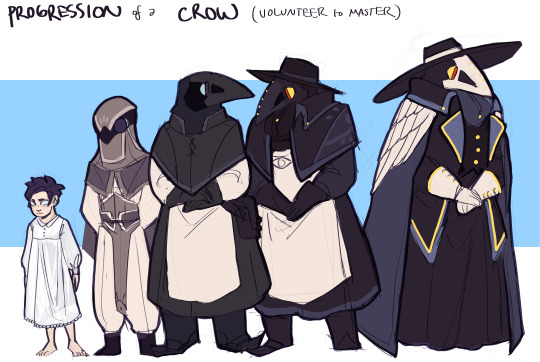

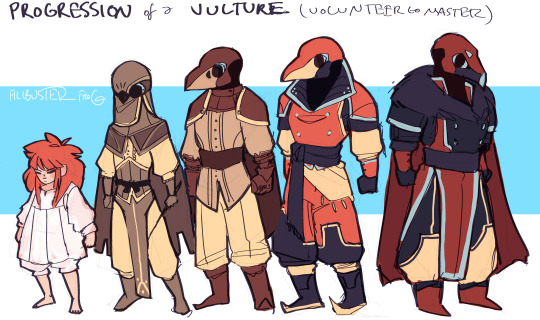
you can identify the rank and class of a plague doctor based on their uniform Owl- specialise in mass-curse control and magical diseases Crow- traditional doctors, are trained to treat large amounts of patients at once Eagle- royal physicians, good at long-term treatment Vulture- quarantine enforcers
85K notes
·
View notes
Text
How To Taste Divinity
Light candles and sit with them in the dark. You are light upon light.
Wear silk and lace and fall into bed
Wear whatever makes you feel connected and at ease
Talk to the stars, read them poetry, tell them how much you’ll miss them in the morning.
Make tea with some milk and honey and breathe in the steam curling up to your face
Take a bath and sink so the water is up to your neck. Feel the air struggle to slowly fill your lungs and come back up, breathe deeply (you don’t need fancy bath bombs/salts/flowers but if you have them then great)
Feel your heartbeat at the pulse points: wrist and neck. Then press your hand against your chest and feel your heart beating again and again.
Imagine the blood rush with each pump and acknowledge that it’s not in your control and that’s ok. Someone’s looking out for you.
Make eye contact often. Even if it’s for a split second.
Talk to a plant, give it water, nature is always there for you, waiting.
Try to feel moonlight. Bathe in it and feel it’s power to wash over you.
Reach out to graze rays of sunlight with your fingertips and slowly sink your body into sunshine as it seeps into your bones and reminds you of your own warmth
Drive down an empty highway with the windows down and imagine you’re the music being whisked away on the wind
Let yourself feel the love you have for everyone in the world. Drown in it. When you feel alone remember this abundance and know it’s reciprocated by someone somewhere. <3
7K notes
·
View notes
Text
Cultural Dark Academia
After my last post about the lack of representation in academia, I felt it neccessary to provide some examples of what I’m talking about. Obviously there are more countries in the world than I can list and provide books for, so for a quick list this is what I got. !! Keep researching !! If you have any more books by POC please reply them !! If a country isn’t listed, that doesn’t mean it’s not important, this is just what I could get together real quick. If I made any mistakes, please let me know, we’re all learning. We need to help each other end eurocentrism in academia, so value representation and educate yourselves 💓💓💓
Chinese:
The Art of War by Sun Tzu
The Dream of the Red Chamber
The Water Margin
Romance of the Three Kingdoms
The Journey to the West
The Scholars
The Peony Pavilion
Border Town by Congwen Shen
Half of Man is Woman by Zhang Xianliang
To Live by Yu Hua
Ten Years of Madness by agent Jicai
The Field of Life and Death & Tales of Hulan River by Xiao Hong
Japanese:
A Personal Matter by Kenzaburo Oë
Pakistani:
Moth Smoke by Mohsin Hamid
How to Get Filthy Rich in Rising Asia by Mohsin Hamid
Ghulam Bagh by Mirza Athar Baig
Masterpieces of Urdu Nazm by K. C. Kanda
Irani/Persian:
Rooftops of Tehran by Mahbod Seraji
Savushun by Simin Daneshvar
Anything by Rumi
The Book of Kings by Ferdowsi
The Rubiyat by Omar Khayyam
Shahnameh (translation by Dick Davis)
Afghan:
Earth and Ashes by Atiq Rahimi
A Thousand Splendid Suns by Khaled Hosseini
Indian:
The God of Small Things by Arundhati Roy
Aithihyamala, Garland of Legends by Kottarathil Sankunni
The Gameworld Trilogy by Samir Basu
Filipino:
Twice Blessed by Ninotchka Rosca
The Last Time I Saw Mother by Arlene J. Chai
Brazilian:
Night at the Tavern by Álvares de Azevedo
The Seven by André Vianco
Don Casmurro by Machado de Assis
Colombian:
Chronicle of a Death Foretold by Gabriel Garcia Marquez
Delirio by Laura Restrepo
¡Que viva la música! by Andrés Caicedo
The Sound of Things Falling by Jim Gabriel Vásquez
Mexican:
Bless Me, Ultima by Rudolf Anaya
Adonis Garcia/El Vampiro de la Colonia Roma by Luis Zapata
El Complot Mongol by Rafael Bernal
Egyptian:
The Cairo Trilogy by Nahuib Mahfouz
The Book of the Dead
Nigerian:
Rosewater by Tade Thompson
Things Fall Apart by Chinua Achebe
Malian:
The Epic of Sundiata
Senegalese:
Poetry of Senghor
Native American:
The Inconvenient Indian by Thomas King
Starlight by Richard Wagamese
Almanac of the Dead by L. Silko
Fools Crow by James Welch
Australian Aborigine:
Dark Emu by Bruce Pascoe
First Footprints by Scott Cane
My Place by Sally Morgan
American//Modern:
Real Life by Brandon Taylor
Namesake by Jhumpa Lahiri
The Hate U Give by Angie Thomas
The Poet X by Elizabeth Acevedo
Internment by Samir’s Ahmed
Their Eyes Were Watching God by Zora Neale Hurtson
Rivers of London Series by Ben Aaronovitch
19K notes
·
View notes
Photo




some of my favorite spitfire art i’ve done.
(of course it’s mostly allene)
read spitfire (18+)
4K notes
·
View notes
Photo
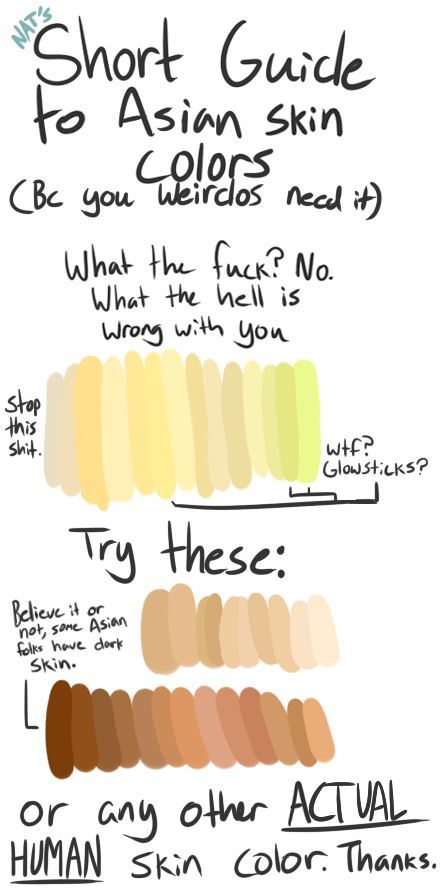
Hi! Made an incredibly quick and easy to comprehend guide because you freaks need it tbh. Image quality kinda sucks but whatever, you get it. Stop putting yellowface on my dash.
35K notes
·
View notes
Photo


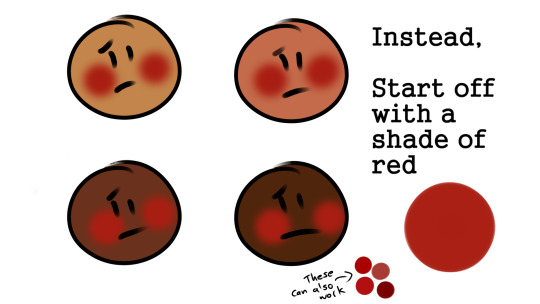
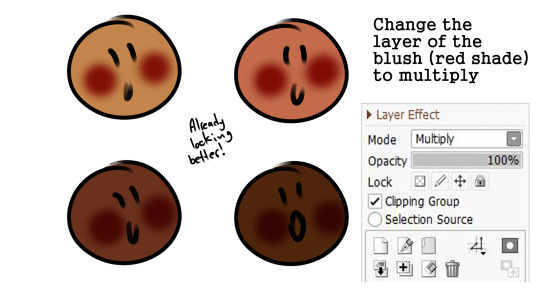
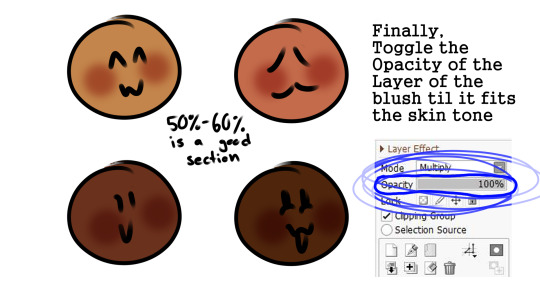

POC blush tutorial
Feel free to repost, but please credit me
61K notes
·
View notes
Photo

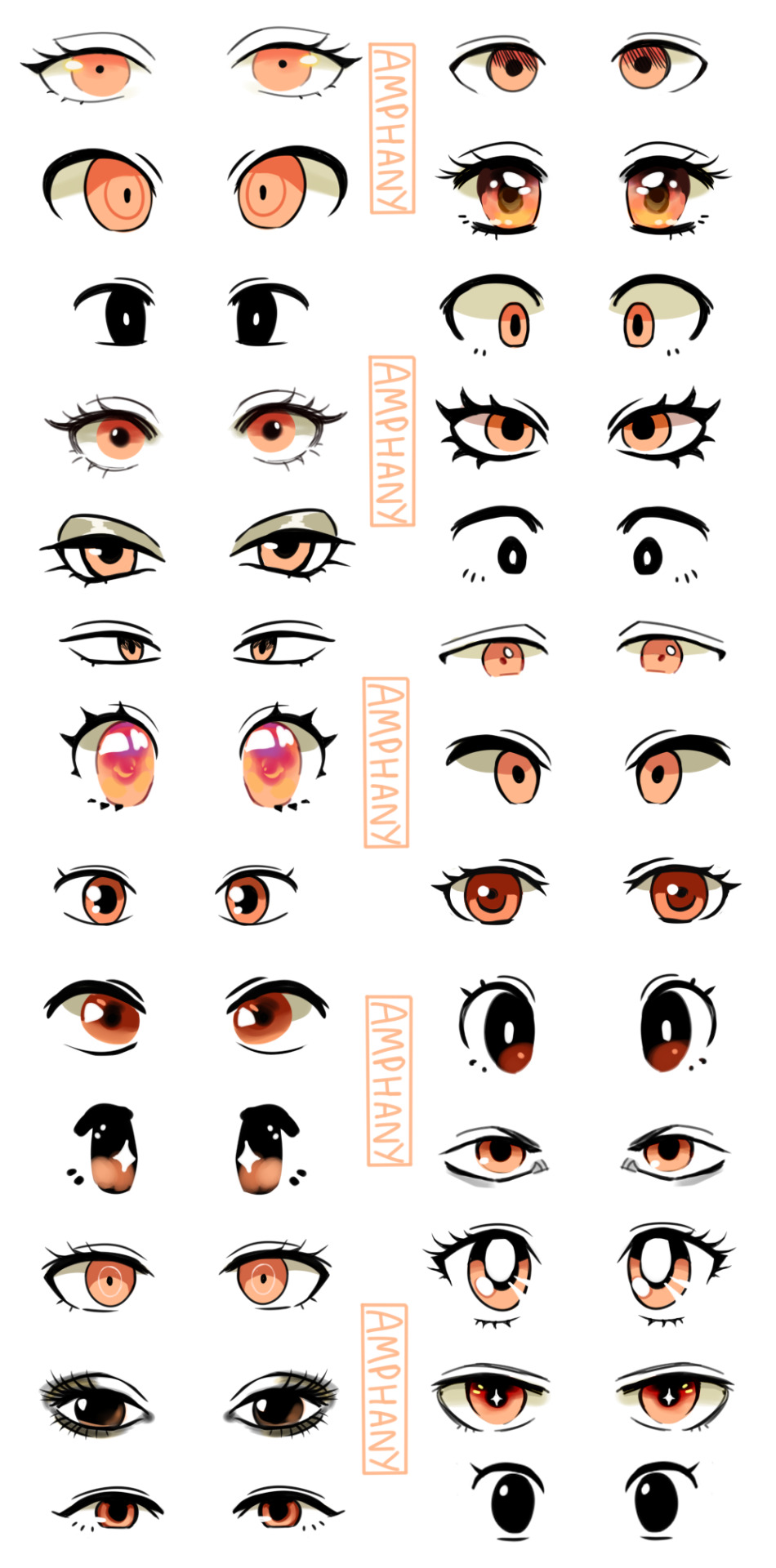
I made a tutorial! I hope it is helpful. Some of the styles of eyes are from Studio Ghibli,Sailor Moon, Pokemon, Dangan Ronpa, Fire Emblem, Ace Attorney.
Please ask me if you have any questions! <3
24K notes
·
View notes
Note
I was wondering what kind of female black characters do people want to see more of? Like, them being soft or selfish?

Black Girls & Women: Representation We Want
As a Black woman reader, I definitely want to see more soft Black girls and women in literature. Girls with their own self-interests (caring about oneself isn’t necessarily selfish) and not always someone else’s caregiver is great too.
Here’s my list!
More Black girls...
In love
With close family bonds and healthy relationships and support systems (that don’t require enduring abuse, fixing their partner, or overall emotional labor to earn domestic happiness)
Being protected
As main characters, heroines and anti-heroes
On adventures
In fantasy and magical settings
In historical settings as peasants, upper-class society, and royalty
Descriptions of Black Afro hair, skin, features as a normal thing in books (see this compilation) and not in an Othering way
On the other hand, vibrant, sometimes hyped up descriptions that allude to their beauty (see this ask. Or this one). Not Othering, just appreciating!
Put us in fancy dresses and give us a sword and let us dance at the balls and have admirers!
Experiencing complex emotions not necessarily in reaction to racism or racist violence
On the book cover! And with an accurate, not light or white-washed model
~Mod Colette
Responses:
@madamef-er
Soft black girls and nerd girls who like cute things.
Shy black girls not just in situations with boys.
More lgbtqia+ black girls. Studs! Femmes!
Gender fluid and non conforming constantly changing their style because they like it!
Spies and not just as the 'sexy bait' or 'weapons master' let us sit behind the computer for once and be hackers and stuff
@tanlefan
Black girls who are just...people.
I want a fantasy escapism adventure that isn't a thinly veiled discussion on slavery or racism or any other aspect of The Struggle. I am tired.
Can I just have a happy Black girl who believes in fairies or something?
@esmeraldanacho-1776 More autistic Black women/girls! I don't care what genre really; just have them in there!
@briarsthicket And enby black people!
@mattiekins
Def soft black girls.
Energetic and playful.
Or shy and quiet.
I want to see more black girls who are nerds and not just mommy mommying or nanny nannying everyone.
I want black girls who want to be a ballerina, or a talk show host, or a game designer etc.
I want a black girl who gets to be happy.
Who doesn't have to act older than she is and be the shoulder for everyone, always.
@xiiishadesofgrey
I want more black lady nerds, if we’re talking modern settings!
More black ladies who have a sporty/playful nature!
Who aren’t afraid to get dirty and make chaos, without being dirty or frowned upon!
Strange as it sounds coming from me, more black princesses! Brandy as Cinderella in the 90s was my first Cinderella, and I LOVE that.
Please, god, more black wlws.
@daintythoughtswritersblock
I want to see tropes exercised
Black women of all shades and tones
@hazelnut4370
Tbh just fellow black people being happy, like I rarely see that,
Or enjoying hobbies
rivergoddessdream
Happily childless black women
Black women traveling the world
Fat black women in happy, healthy, poly relationships
Black cis and trans women having a true sisterhood
Autistic black women
Black women in period pieces that aren't about slavery and don't take place in the US
Black women thespians
Black women painters
Black women revolutionaries
Black women front and center in the narrative
Black women healers and storytellers
Non christian Black women stories
Black women rockers
#complicated black women characters #tell those stories
@missnancywrites
More Black Girls...
With diverse cultural and social backgrounds!
That are nerdy, girly, intelligent, ditzy, all the personality types that white girls in literature get!
That are fragile, shy or anxious. Almost every single black woman I’ve seen in media or otherwise are wise and adult. Let us be an absolute wreck, or an anxious mess!
In science! Characters like Shuri, Moon Girl and Iron Heart in Marvel revitalized me, cuz young black girls only get two types. Both these girls are in intellectual and in science, but have bery different personalities.
In interracial relationships, and not because they hate black men or something along those lines. They just happen to be dating outside their race, black women get hate for that in real life and it’s unfair. Let us have relationships outside our race! That said...
In platonic relationships with black men! I think that’s important, cuz I don’t often seen black solidarity unless it’s for the purpose of showing how diverse the writing is. Let them share interests, daily frustrations that they would only understand, but don’t force a romance.
In solid friendships with other black girls! For some reason, we’re pitted against in each other inside and outside of writing! Write some sweet wholesome friendship!
With different sexualities! Let there be some that are ace, others are gay, bi or pan! Just be sure you don’t sexualize them, or turn em into a robot.
•Who are dark-skinned! This can be seen a lot in tv or movies, but when you want a black girl in your stuff don’t just hire a light-skinned black girl or a biracial black girl. It’s not the same.
Who get to act their age! Black women have a long standing history of being adultified, starting from a very young age, and it’s extremely harmful. Little black girls can wear what they please, the problem is people sexualizing them. Let the teen black girl be a teenager, she can look out for her siblings but she isn’t the keepern the house or their lives. Young adult black girls are not ideal housewives or capable working machines, they mess up and mess around just as much as any young adult.
With mental/physical disabilities or illnesses. Alongside with being forced to be more mature than they are, disabilities/illnesses are never taken seriously and we’re forced to just deal with it. Having black girls who happen to have these issues, but also have a healthy support group is always good!
@ink-and-roses
Seen as beautiful and desirable and NOT in a hypersexualized way
Interracial relationships are wonderful because black girls are beautiful and lbr everybody sees it
Sensitive and allowed to feel something other than righteous anger
Some black girls are skinny! Some are big! Some are slim and some are curvy! There’s no mold!
Dark skinned!
A YA protagonist out to save the world from something other than racism
Superpowers or magic that doesn’t come from generational trauma or slavery
Black characters who support other black characters. None of this token crabs in a barrel business.
Black girl nerds and punks and goths exist. I promise.
And this may be a personal preference but I’m not against the idea of a damsel in distress. We are always being strong. Let her be soft and delicate and cared for. Let her be princess carried and rescued from the tower and the dragon.
[Note from Mod: It’s not just you! I love a Black damsel being saved and protected. What is progressive for one woman varies due to historical and present depictions and is why intersectionality in feminism is so important! -Colette]
@nightlyswordswoman
As a writer, I write a lot of my black female characters like this because I rarely ever see black women being represented in these ways! ESPECIALLY on the covers of books, unless the author themselves is a black woman and even then its rare.
Too often black women are stereotyped as strong protector types that are always rough, tough, and don’t need anybody in books (and real life), when that’s honestly just dumb and inaccurate--black women are as vulnerable as anyone else (in some cases, even more vulnerable, but that’s another topic).
So yeah, this list is 100% accurate and I encourage those who are interested in writing black female characters (whether you’re a black woman or not) to consider writing them like this, because the stereotype needs to die lol.
18K notes
·
View notes
Text
Can we agree that Michele Morrone is hot AF and whatever but that the movie was a gigantic piece of bullshit? Like a whole ass trainwreck loaded with issues.
Can we NOT make it a thing? Please.

331 notes
·
View notes
Text
i just watched 365 days and honestly i don't understand how some people can watch it with straight face, like seriously like it. i only watched it out of boredom, because when I read the description, the first thing that crossed my mind was "this is straight outta wattpad". i'm sorry, if you liked it, but i was laughing most of the time, because this was like
"how many wattpad cliches you want?"
-"yes"
then i googled it, of course, found out there's a whole trilogy and now that i've read the descriptions and reviews for all three, i have only one question
why?
372 notes
·
View notes

